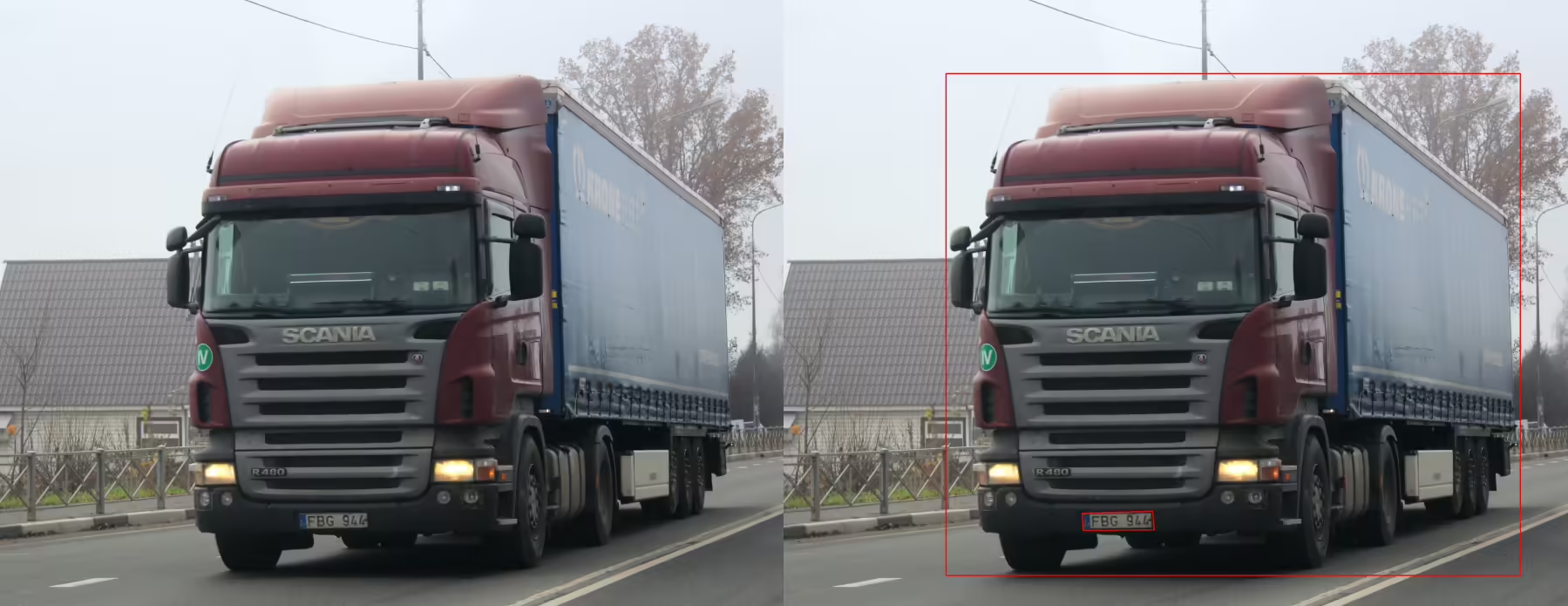Task:
A long-term client approached us with a task critical for their computer vision pipeline: to accurately annotate vehicle license plates across various regions for use in traffic camera systems. Unlike previous projects, this time the complexity was significantly higher. They needed not only bounding boxes for entire license plates, but also precise annotations for each individual digit, the region code, and specific regional symbols — including those in Arabic script.
Speed and accuracy were paramount. The client planned to train a neural network on this data to automate plate recognition in real-world conditions, and the annotated dataset had to reflect real diversity across regions, styles, and lighting conditions.
Solution:
-
- 01
-
Task Design & Guidelines Development:
- Domain Research and Client Interviews:
We began by exploring the structure of license plates and regional variations across the target geography. This involved consultations with the client to clarify all edge cases and potential ambiguities. - Detailed Annotation Guidelines:
We developed a comprehensive annotation manual covering every object class: full license plate, individual digits, region codes, and national/regional symbols.
The guide included visual examples, rules for difficult cases (e.g., partially occluded plates), and standardized labeling logic. - Edge Case Library & Reference Materials:
A shared library of rare or borderline cases was created to ensure consistency when annotators encountered unexpected formats or damaged plates. - Pilot Run & Calibration:
A small batch of images was annotated and reviewed collaboratively with the client to lock in quality standards before full-scale production.
-
- 02
-
Scalable Team Setup & Training:
- Specialist Team Assembly:
We onboarded a dedicated team of over 30 trained annotators with prior experience in computer vision tasks, ensuring minimal ramp-up time. - Rapid Onboarding Process:
Annotators went through structured training sessions, completed a qualification test, and participated in guided walkthroughs of the annotation platform. - Live Helpdesk Support:
A real-time support system was launched to provide answers to annotators’ questions on edge cases and tool usage, ensuring uninterrupted productivity. - Monitoring Infrastructure:
A custom dashboard tracked real-time annotation rates, validator load, and individual accuracy metrics to maintain speed without sacrificing quality. - Balanced Workflows:
The project was carefully scheduled to avoid annotator fatigue and ensure consistent throughput, with task assignments adjusted dynamically based on performance.
-
- 03
-
Iterative Delivery & Quality Assurance Loop:
- Client Feedback Integration:
Early deliveries were used to fine-tune both annotation rules and internal QA processes. Feedback from the client was immediately incorporated into updated guidelines. - Layered QA Process:
A two-stage validation approach was used: manual reviews of random samples and logic-based consistency checks across labels (e.g., size coherence between digits and the plate bounding box). - Versioning & Rule Updates:
As new plate formats and exceptions were discovered, the guidelines were updated, and annotators were briefed accordingly. Change logs were maintained and version-controlled. - Reporting & Transparency:
Weekly reports summarized quality metrics, identified bottlenecks, and included recommendations for further refinements or automation opportunities.
Result
We delivered 100,000 images annotated with multilayered structure: bounding boxes for full plates, digits, region codes.
Delivered on time thanks to early team onboarding, pilot-phase efficiency testing, and a fallback plan involving ML-assisted pre-labeling.
>97.5% accuracy verified through manual QA and automated checks
No revisions required — all batches approved on first delivery
Improved model performance for the client’s plate recognition pipeline, outperforming datasets built with synthetic data






